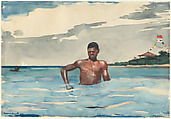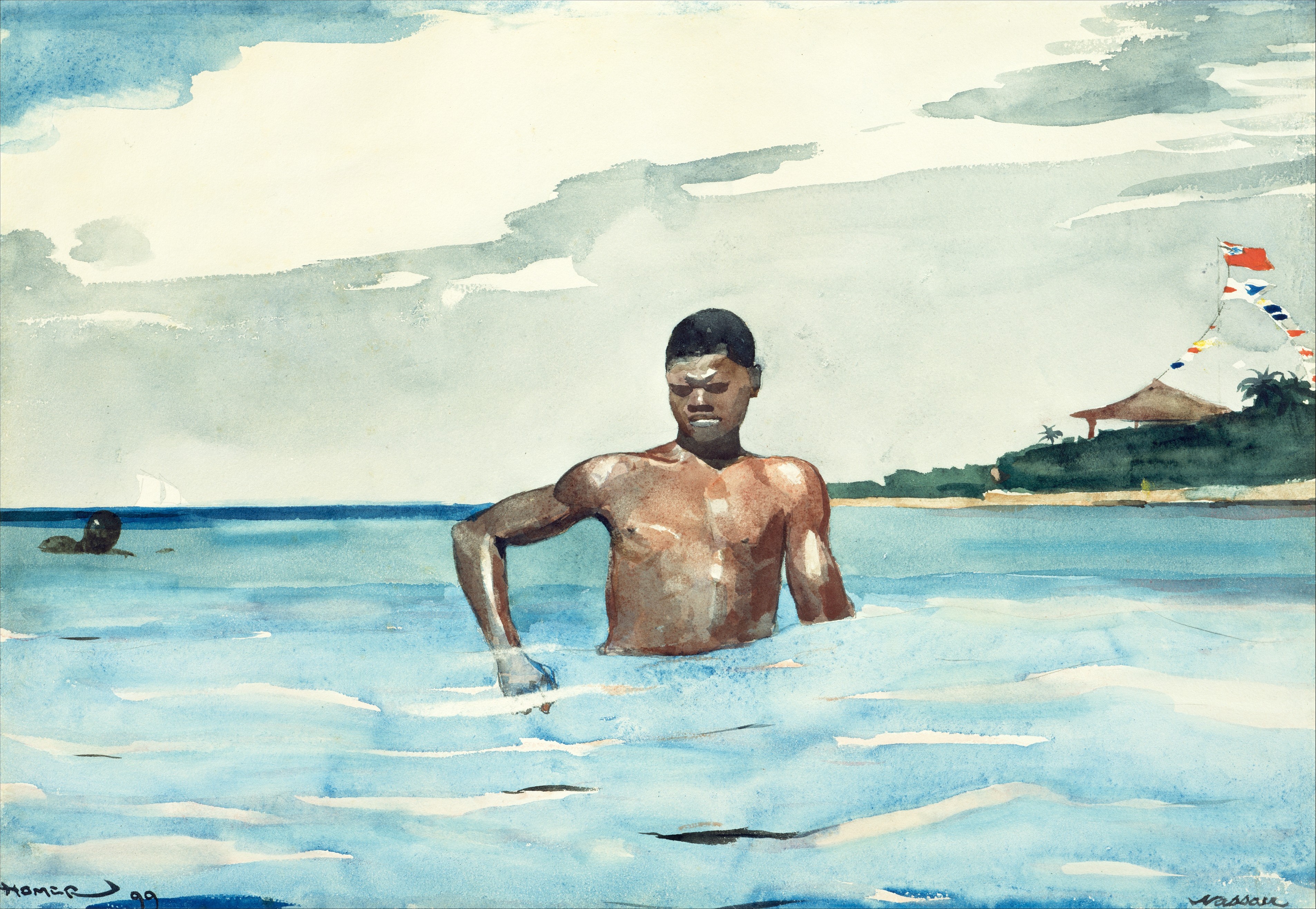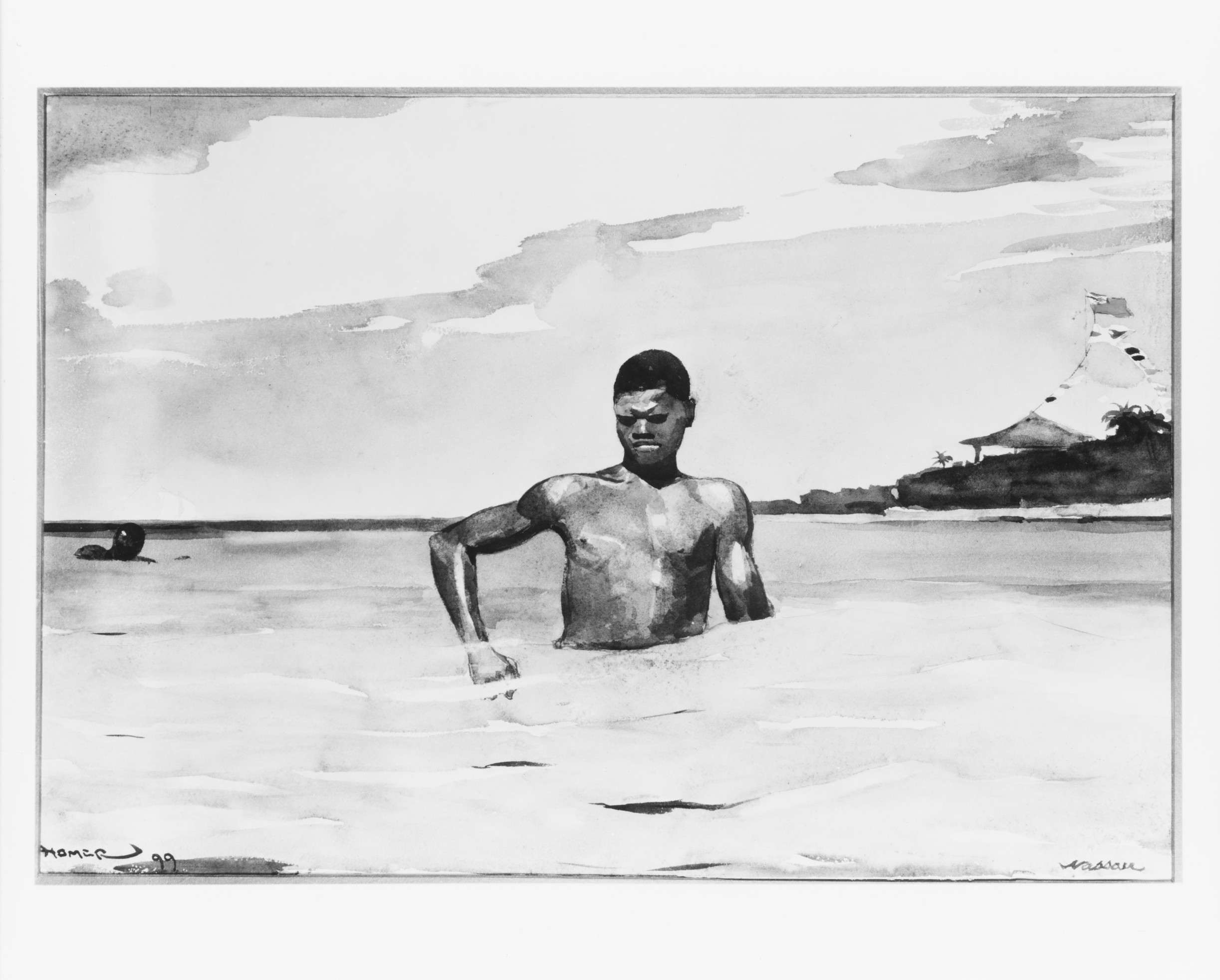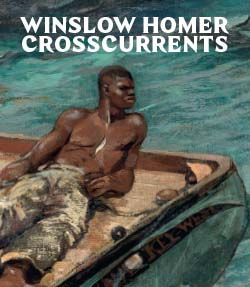The Bather
Winslow Homer American
Not on view
During his second visit to the Bahamas in 1898–99, Homer, then sixty-two years old, seems to have reveled in depicting the bodies of vigorous Black men glistening in warm water and sunlight. It is significant that Homer foregrounded these individuals’ strength and sensuality in his art, especially in the context of the Bahamas, which were promoted as a respite for sickly White tourists to regain their health. Inherent in the images is a tension related to racial politics and class disparities, as the older White artist recorded the robust young Black men. This apparent moment of leisure is situated beneath the Union Jack, an intentional reminder of the Bahamas’ position as a British Crown colony.
This image cannot be enlarged, viewed at full screen, or downloaded.
This artwork is meant to be viewed from right to left. Scroll left to view more.






